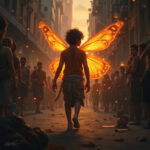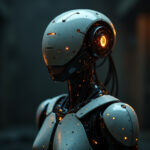Introduction
In recent years, technology has transformed many aspects of our lives, and the world of visual arts is no exception. The emergence of artificial intelligence (AI) has opened up new avenues for creativity and expression, allowing artists to explore innovative techniques and ideas. This intersection of AI and visual arts marks the beginning of a new era, where machines and humans collaborate to create stunning works of art.
The Role of AI in Art Creation
AI is not just a tool; it has become a co-creator in the artistic process. Artists are using algorithms and machine learning models to generate images, music, and even poetry. Here are some ways AI is influencing art:
- Generative Art: AI can create unique artworks by learning from existing styles and patterns. Programs like DALL-E and DeepArt allow users to input parameters and generate original pieces based on their specifications.
- Style Transfer: This technique enables artists to apply the style of one artwork to another. For example, you can take a photograph and transform it to resemble a famous painting, creating a blend of the old and the new.
- Interactive Art: AI can respond to viewers in real-time, creating a dynamic experience. This interactivity can lead to artwork that evolves based on audience engagement.
Challenges and Ethical Considerations
While the collaboration between AI and artists is exciting, it also raises important questions. One significant concern is the issue of originality. If AI generates a piece of art, who owns it? Is it the programmer, the user, or the AI itself? Additionally, there are worries about the potential for AI to mimic or plagiarize existing works.
Furthermore, the use of AI in art can lead to a homogenization of creativity, as machines may favor patterns and styles they have been trained on. Artists must navigate these challenges carefully to ensure that their work remains authentic and meaningful.
The Benefits of AI in Visual Arts
Despite the challenges, the benefits of integrating AI into visual arts are undeniable. Here are some advantages:
- Enhanced Creativity: AI can push artists out of their comfort zones, encouraging them to experiment with new styles and techniques.
- Accessibility: Tools powered by AI can democratize art creation, allowing people without formal training to express themselves creatively.
- Collaboration Opportunities: Artists can collaborate with AI to produce works that blend human intuition with machine efficiency, resulting in unique artistic expressions.
Conclusion
The intersection of AI and visual arts signifies a transformative shift in how we create and appreciate art. As technology continues to evolve, so too will the possibilities for artistic expression. By embracing AI, artists are not only expanding their creative horizons but also inviting audiences to participate in a new narrative of art. This new era promises to be rich with innovation, collaboration, and endless inspiration.




